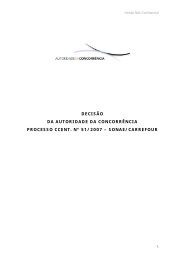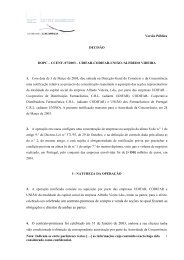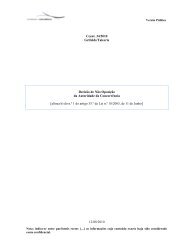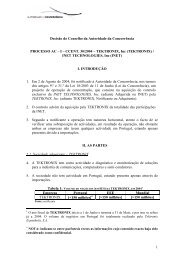Dynamic price competition with capacity constraints and strategic ...
Dynamic price competition with capacity constraints and strategic ...
Dynamic price competition with capacity constraints and strategic ...
Create successful ePaper yourself
Turn your PDF publications into a flip-book with our unique Google optimized e-Paper software.
AppendixAppendix A1: Proof of Lemma 3.hFirst, we argue that the players choose <strong>price</strong>s in the interval V32,V 3i. Suppose that seller 2,asked a <strong>price</strong> p less than V 3 /2. Ifseller1 charges a <strong>price</strong> less than p, then seller 2 will sell 1 unit,while if seller 1 charges a <strong>price</strong> higher than p, seller2 sells 2 units. Seller 2 could improve his payoffno matter what <strong>price</strong>s seller 1 asks by asking for V 3 − ² for ² very small <strong>and</strong> selling at least oneunit for sure, since V 3 − ²>2p. Since seller 2 will charge a <strong>price</strong> of at least V 3 /2, thensowillseller1; otherwise, seller 1 could increase his <strong>price</strong> <strong>and</strong> still guarantee a sell of 1 unit. Thus, both sellerscharge at least V 3 /2. Now,wearguethat<strong>price</strong>willbenomorethanV 3 . Take the highest <strong>price</strong> poffered in equilibrium greater than V 3 . First, assume that there is not a mass point by both sellersat this <strong>price</strong>. This offer will never be accepted by the buyer, since he will always buy the secondunit from the lower <strong>price</strong> seller <strong>and</strong> his valuation for a third unit is V 3 V 3 /2, <strong>with</strong> the buyer buying two units from the seller<strong>and</strong>, thus, improve his payoff above V 3 . Thus, the lowest <strong>price</strong> is V 3 /2. Since both sellers must offerthis <strong>price</strong>, seller 1’s expected payoff must be V 3 /2.We now derive the equilibrium <strong>price</strong> distributions. Let F i be the distribution of seller i 0 s <strong>price</strong>offers. Seller 1 0 s <strong>price</strong> distribution is then determined by indifference for seller 2:p [F 1 (p)+2(1− F 1 (p))] = V 3 ,since seller 2’s expected payoff is V 3 by the earlier argument.(A1.1)Seller 2 ’ spayoff is calculated as28


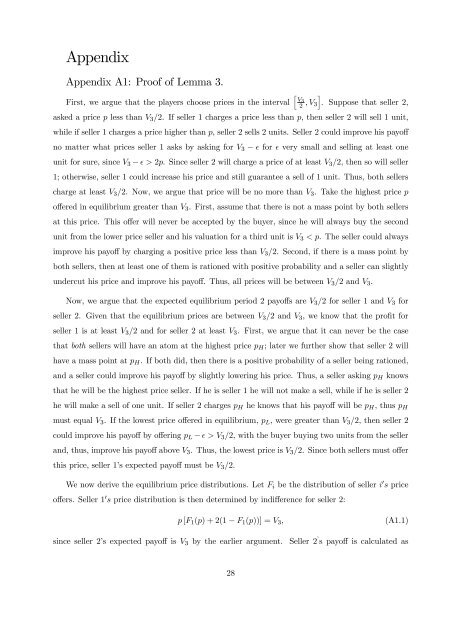

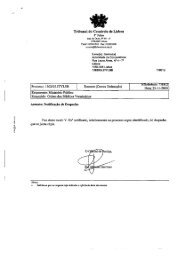
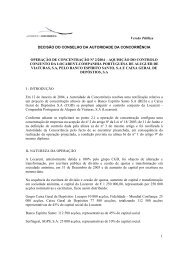

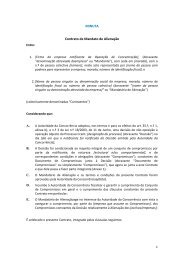
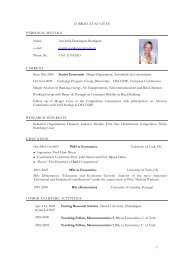

![Versão Pública Nota: Indicam-se entre parêntesis rectos [â¦] as ...](https://img.yumpu.com/39768942/1/184x260/versao-pablica-nota-indicam-se-entre-parantesis-rectos-a-as-.jpg?quality=85)
